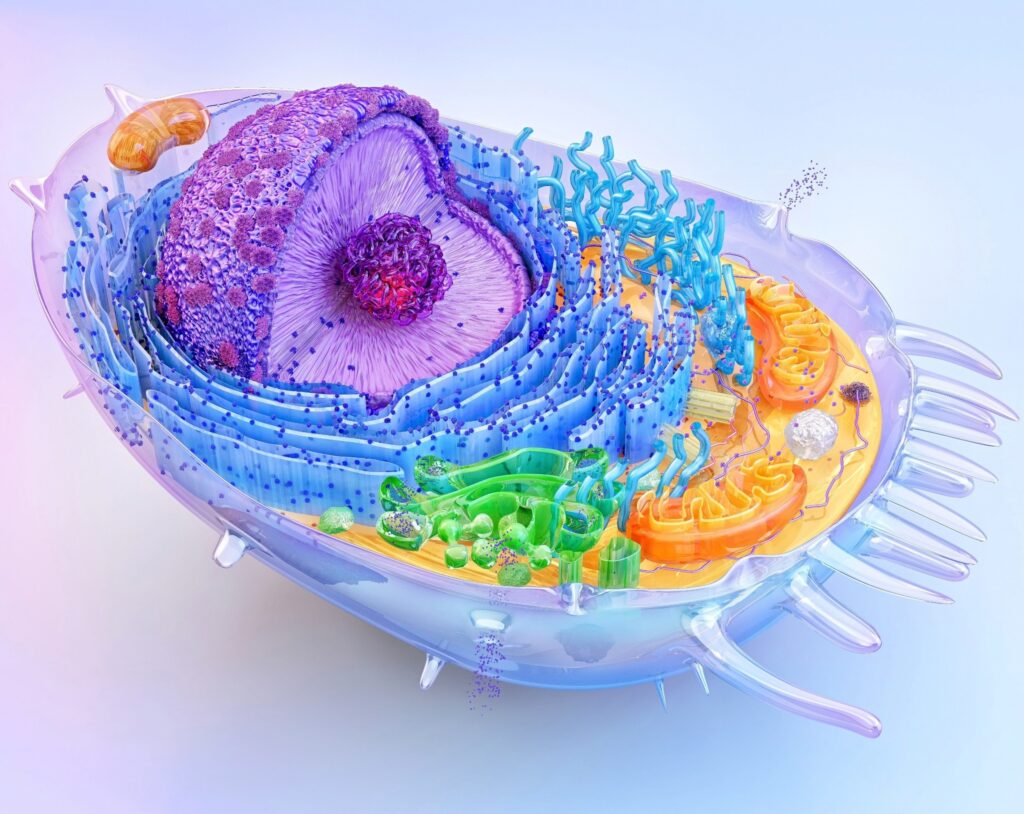
For centuries, exercise has been a cornerstone of health advice, credited with reducing disease risk, enhancing mental well-being, and extending lifespan. Despite its well-documented benefits, the cellular processes triggered by physical activity have largely remained elusive. How exactly do cells perceive exercise, and how does this perception translate into energy, healing, or even pain?
A groundbreaking study by researchers at the University of Western Australia and the Perron Institute sheds new light on these questions. The study, led by Dr. Ziming Chen and Professor Minghao Zheng, reveals that cells can detect external forces such as stretching and convert them into energy-related responses, potentially revolutionizing our understanding of exercise and healing.
Unveiling the Cellular Mechanism
The researchers discovered that a mechanical signal travels from the cell’s exterior directly into its energy center, the mitochondria, via an organelle known as the endoplasmic reticulum (ER). This signal is crucial for maintaining tissue health and regulating energy.
Traditionally recognized for its role in protein synthesis, the ER in this study acts as a sensor, detecting the stretching or compression caused by movement. It then communicates these signals to the mitochondria, which are responsible for energy production.
“Cells constantly experience physical forces, especially in load-bearing tissues such as tendon, muscle, and lung,” said Dr. Chen.
The process begins with integrins and stretch-sensitive ion channels at the cell membrane, which activate the ER. The ER then transmits the signal to mitochondria through a direct contact zone called the mitochondria-associated ER membrane (MAM), functioning as a bridge between the two organelles.
Mechanical Forces and Energy Production
To validate their findings, the researchers developed bioreactors to apply gentle strain to human tendon cells. Advanced imaging techniques showed that moderate strain caused mitochondria to elongate and become more active, enhancing their energy production capabilities.
Conversely, excessive strain led to mitochondrial fragmentation and dysfunction. The ER also swelled and failed to communicate effectively with the mitochondria, triggering stress responses and limiting energy production.
“We found that the endoplasmic reticulum plays a central role in converting these mechanical cues into metabolic responses, controlling how cells produce energy and prevent tissue damage,” Dr. Chen explained.
Balancing Exercise and Cellular Health
The team identified an optimal level of mechanical stress, where cells enhance mitochondrial function. Beyond this threshold, cells enter a danger zone, with increased ER stress, reduced mitochondrial contact, and energy loss. The study highlights how excessive strain disrupts ER-mitochondria coupling, shifting cells from adaptive energy production to stress response and dysfunction.
“This research has significant implications for understanding how our tendons and ligaments respond to exercise and physical activity,” Professor Zheng noted.
Implications Beyond Exercise
The findings extend beyond exercise, offering potential benefits for individuals unable to move due to illness. Treatments could simulate mechanical signals to improve cell function without actual movement, benefiting patients with motor neuron disease or muscle atrophy.
The study also links mechanical stress to chronic conditions. Misregulated ER-mitochondria coupling may contribute to diseases such as asthma, tendinopathy, osteoporosis, and hypertension, suggesting that future therapies could target these internal cell bridges.
Harnessing Cellular Responses for Health
This research underscores that cells do more than tolerate movement—they utilize it to adapt, energize, and repair. At the heart of this process is a mechanical dialogue between the endoplasmic reticulum and mitochondria. When finely tuned, this system supports health and prevents injury; when overstrained, it deteriorates.
Even gentle stretching now appears to significantly influence cellular processes, initiating a chain reaction that maintains energy and stability within the body. The challenge ahead lies in harnessing this system for healing, performance, recovery, and disease treatment, particularly when traditional exercise is not feasible.
The study is published in the journal Science Advances.
—
Like what you read? Subscribe to our newsletter for engaging articles, exclusive content, and the latest updates.
Check us out on EarthSnap, a free app brought to you by Eric Ralls and Earth.com.






